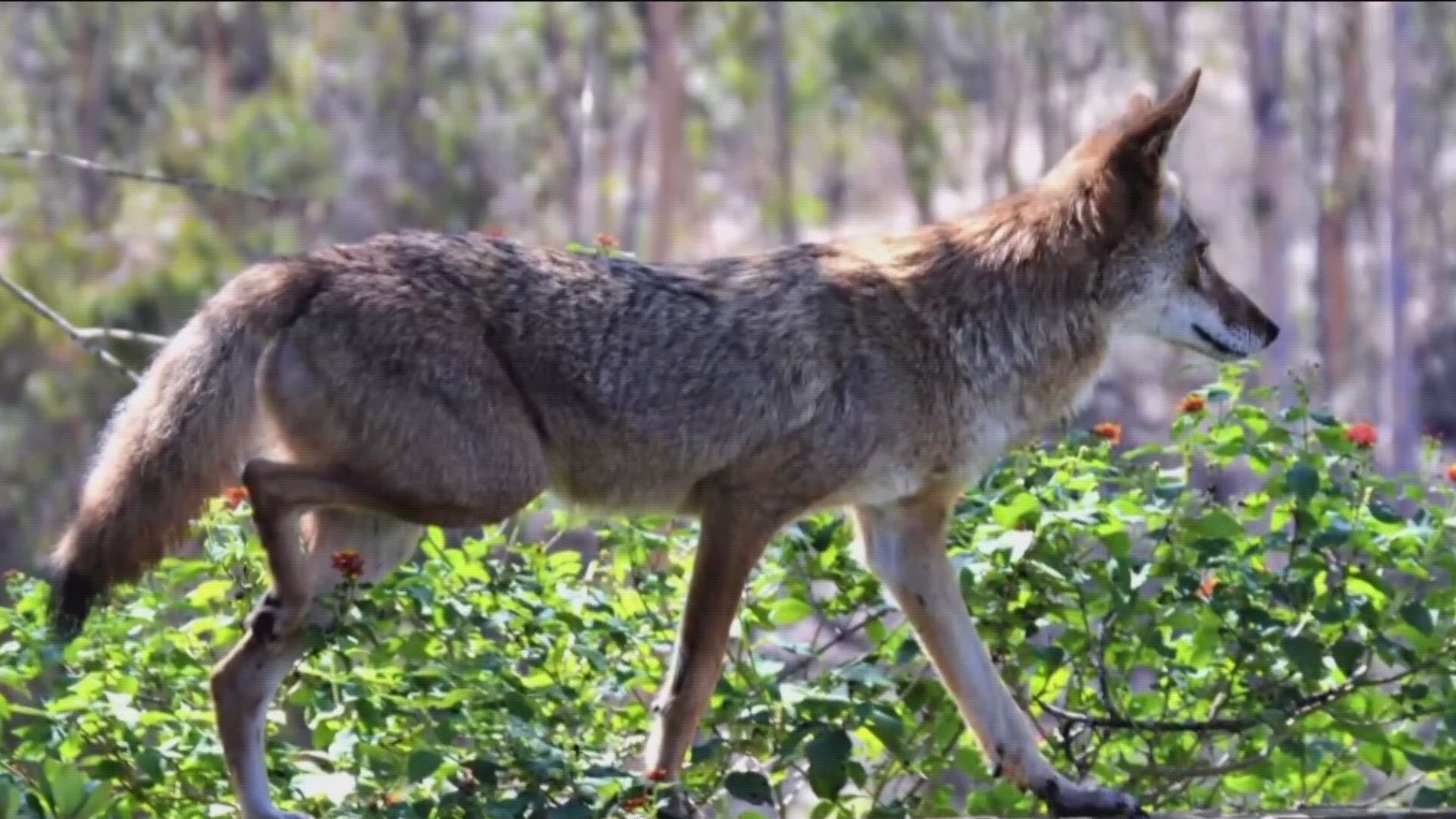SAN DIEGO — Are you seeing more urban coyotes in your neighborhood? You're not alone. Experts say it's typical to see more coyotes roaming in September and October because it's pupping season, and they're out looking for food.
"The coyote pups are typically born in April or May and this is the time of year when they're starting to disperse and go out on their own so you're seeing a lot of younger coyotes that are just kinda wandering around," said Dr. Jon Enyart with Project Wildlife.
As for why they seem to be coming so close , and in neighborhoods along our coast, Dr. Enyart says it's the product of encroachment.
"We developed around them with these canyons and everything else and the canyons they can access from so far away, so I think as we developed and we've had our trash out and our pets out, they've just become accustomed to it as a food source and it's a pretty easy one and they don't have to work hard to get one," said Dr. Enyart.
CBS8 reached out to Carl Smith, Assistant Director of the County's Department of Animal Services.
He offered the same explanation.
"We've just continued to encroach into their areas that they have typically lived. So they're going to end up around people more," said Smith.
The County’s Department of Animal Services (DAS) has some tips to keep them away and help you, your family and pets stay safe.
Coyotes will often roam out of their immediate area because of things residents do to attract them – like leaving your pet’s food and water outside or unsecured trash cans in the backyard. Try to remove all food sources, including fallen fruit from trees.
There are also some things you can do to prevent coyotes from getting into your backyard. Have you ever heard of a “coyote roller?” It’s a metal tube that you put on top of your fence, when the coyote tries to climb over the fence the tube will spin and prevent any traction. It’s an easy and humane way to keep coyotes out.
There’s another simple and effective technique to use if you see a coyote in your path called “coyote hazing.” When hazing you scare animals away by making the animal afraid of people and not wanting to return to your neighborhood.
If you see a coyote approaching you, here’s what you should do:
- Stop and yell at it to go away.
- Make yourself look big and scary by waving your arms above your head.
- Maintain eye contact.
- Stomp your feet and make loud noise.
- Always maintain a safe distance.
When hazing a coyote, it’s very important to continue to do this until the coyote leaves the area and is out of sight. If the coyote continues to hang around, take a couple steps forward, stop and yell again.
What to do when I need help with wildlife?
- The County will respond when a wild animal is an immediate threat to people or other animals.
- The County will respond if the animal is sick or injured, too young to survive on its own or trapped.
- The County will respond if the wild animal is a rabies agent (raccoons, skunks, bats, foxes or coyotes, for example) AND has attacked you or your pet.
However, the County will NOT respond to reports of wildlife being loose or simply roaming. The County cannot help you with wildlife nuisance problems like skunks under your porch or opossums raiding your pet’s food.
Coyotes are a “rabies vector species,” which means rabies, a preventable viral disease, can spread through the bite of a rabid coyote to people or other animals. This is why it’s very important to take proper precautions and avoid coyotes when you see them in your community.
If you enjoy the County’s preserves or parks when you take your dog for a walk, make sure to always keep them on a leash and don’t let them stray too far away from you. If you have a cat, make sure to keep it indoors. If you see a coyote and you have a small dog with you, pick it up immediately. Keeping it on the ground will cause a coyote to charge.
According to California Department of Fish and Wildlife, coyotes play an important role in the ecosystem and help keep the rodent populations under control. So, we need to learn how to live with them.
For more information about wildlife, visit the DAS’s website at www.sddac.com or call (619) 767-2675.
Watch Related: Coyote sightings on the rise in beach area neighborhoods (May 24, 2023)

